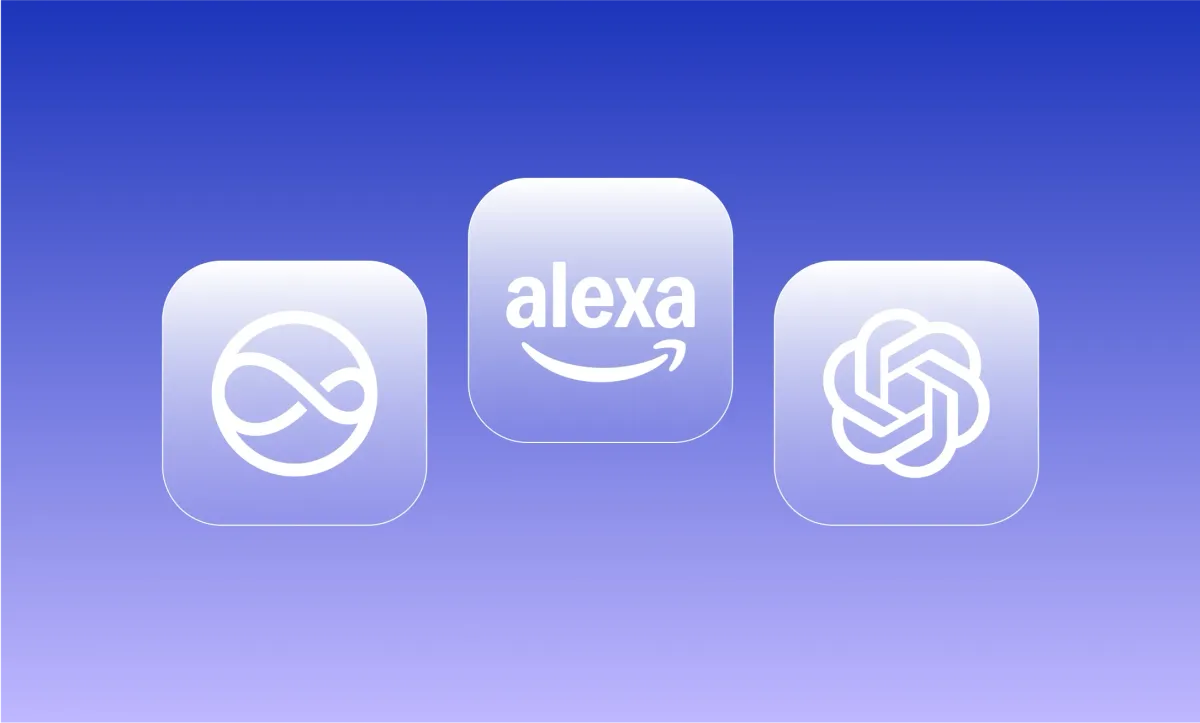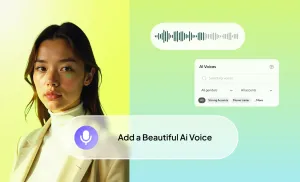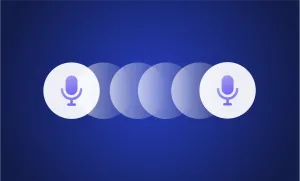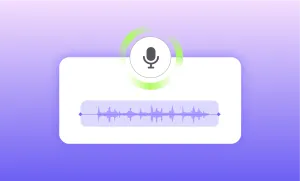You wake up, stretch, and ask your phone to read you the weather. A soft, familiar voice responds. A voice you’ve probably heard countless times in your daily life—on your GPS, your smart speaker, maybe even in an AI-generated customer service call.
And most of the time, that voice is female.
This isn’t a random choice. It’s not a technical limitation. It’s a decision shaped by history, psychology, and marketing research.
Why do tech companies default to female AI voices? Is it because users find them more approachable? Or is there something deeper at play?
Let’s unravel the layers behind this decision and what it means for content creators, audiences, and the future of AI voices.
The History of Female AI Voices
The female voices in AI assistants today weren’t chosen at random. They come from a long history of technological design, user psychology, and old habits that shaped the way we hear digital voices.
The Telephone Operator Effect
Before AI, there were switchboards. And before switchboards, there were men doing the job.
In the late 1800s, telephone companies started replacing male operators with women. Customers found female voices more pleasant, and companies saw them as more patient and polite. The job required long hours of repeating the same phrases, connecting calls, and maintaining a calm, accommodating tone. Women became the industry standard.
By the time automated phone systems arrived, the idea of a “helpful female voice” had already been ingrained in everyday life. The shift to AI assistants decades later didn’t feel new—it felt familiar.
Technology Was Designed for Male Voices
It wasn’t just social norms that shaped voice technology. The way devices were built made male voices sound clearer.
In the 1920s, radio executives claimed that women’s voices were “shrill” and “unpleasant.” The real issue wasn’t the voices themselves—it was the broadcasting technology. Early audio systems were designed around male voices, and higher frequencies, which are crucial for clarity in female speech, were often lost.
Then came Bell Labs in 1927, which set the standard for telephone bandwidth between 300 and 3,400 Hz—a range that worked well for male voices but cut out important details in female speech. Women’s voices sounded thinner, less defined, and sometimes harder to understand. Instead of improving the technology, companies leaned into the idea that male voices were simply clearer.
Even modern AI training reflects these choices. Female voices dominate AI assistants because the datasets used to train them have historically included more female speech. The cycle repeats because technology was built with a bias that never got corrected.
Psychology and User Preferences
Even with better technology today, companies still favor female voices. Studies show that people feel more comfortable with them.
- People associate female voices with warmth and trust. Many users prefer female-voiced AI because it feels less intimidating and more approachable.
- Cultural exposure plays a role. Automated call centers, customer service lines, and navigation systems have used female voices for decades, reinforcing the idea that they are best suited for assistant roles.
- The “BMW Incident” proves bias runs deep. When BMW launched a GPS system with a female voice in Germany, male drivers rejected it. They refused to take directions from a woman. BMW switched the voice to a male one for that market.
Even when companies offer a male voice option, the default remains female. AI assistants are designed to be helpful, polite, and easy to interact with. The expectation that these traits belong to female voices is deeply rooted in both history and psychology.
Why This Matters for AI Today
The decisions made decades ago still shape the AI voices we hear every day. The history of female AI voices isn’t as much about what people prefer as much as it's about what people have been taught to prefer.
Tech companies continue using female voices because they work. But they also shape how we interact with AI, reinforcing the idea that assistants should be polite, accommodating, and deferential. So in its own way, the predominance of female AI voices is a reflection of much deeper social norms.
The Marketing Strategy Behind Female AI Voices
AI voices aren’t designed to be neutral. Every element—pitch, tone, delivery—is carefully crafted to make them sound likable, trustworthy, and easy to interact with. That's because the goal isn’t just functionality. It’s engagement.
Tech companies want users to form habits around AI assistants. The more someone interacts with a digital assistant, the more likely they are to rely on it daily. And that’s where marketing strategy comes in.
Why AI Voices Are Engineered to Feel Personal
People talk to AI assistants like they talk to humans. That’s why companies go beyond basic speech synthesis and build voices that feel personal.
- Conversational pacing: AI voices aren’t rushed. They leave small pauses between phrases, making responses feel more natural.
- Warmth and friendliness: The tone is fine-tuned to be engaging, balancing a robotic cadence with just enough human-like warmth to build comfort.
- Subtle emotional cues: The rise and fall of intonation make AI voices sound interested rather than flat, preventing them from feeling detached.
None of this happens by accident. The right mix of friendliness, clarity, and warmth makes AI feel less like a tool and more like a companion.
How Brands Use AI Voices to Strengthen Their Identity
If you think of all the big players out there—Apple, Samsung, OpenAI— they've all developed some of the most advanced AI assistants out there. But each one is different, and it's because AI assistants aren’t just a part of a product that's done and dusted. They’re extensions of a brand.
- Siri was designed with a more conversational, playful tone. Apple intentionally programmed it with witty responses and a casual delivery style. Many users associate Siri with personality-driven interactions rather than just efficiency.
- Alexa leans toward being direct and functional. Amazon designed it for task completion—shopping, smart home control, and quick responses—rather than playful banter.
- Google Assistant has been widely described as more neutral and factual. It tends to provide straightforward, information-driven answers with fewer conversational quirks compared to Siri.
The voice itself becomes part of the brand experience. It’s why companies spend years fine-tuning how their AI sounds.
The Science of Trust in AI Voices
Marketing strategy doesn’t stop at branding. It shapes how people trust AI.
- Politeness increases engagement: AI voices often include softeners like “I’m sorry, I didn’t catch that,” instead of a blunt error message. This makes users feel heard rather than dismissed.
- Confidence makes AI feel more reliable: A hesitant or uncertain voice would create doubt. That’s why AI assistants deliver answers with a steady, confident tone—even if they’re pulling information from a basic search query.
- Personalization builds familiarity: Some AI assistants adjust their tone slightly based on repeated interactions, making them feel more in sync with users.
The more trustworthy and approachable an AI voice feels, the longer people will keep using it.
Marketing AI Voices as “Companions”
Tech companies have moved away from selling AI as a tool. Instead, they frame AI assistants as companions—something that helps, learns, and even “understands” the user.
This shift changes how AI is marketed. Instead of positioning a voice assistant as just another feature, companies create campaigns that show AI as part of someone’s routine—helping them wake up, organize their schedule, or even tell jokes.
The more integrated AI becomes, the harder it is to ignore. And that’s the entire strategy.
How AI Voice Bias Affects Content Creators and Audiences
AI-generated voices are far from neutral. They shape how people interpret content, trust information, and engage with it. A strong, steady voice can make a message feel credible. A softer, more expressive one can make it feel personal. These choices matter.
For creators using AI voices, perception is everything. Some audiences associate deeper voices with authority, while others respond better to something more conversational. The wrong voice can create distance. The right one can build trust.
But options are still limited. Many AI voices fit predictable patterns. Female voices are often tuned to sound warm and helpful. Male voices are designed to feel more commanding. Gender-neutral voices exist, but they’re rare and sometimes feel synthetic. Creators looking for flexibility don’t always get it.
There’s also the issue of customization. AI voices can be sped up, slowed down, or pitched differently—but emotional expression is harder to control. A voice that’s too robotic kills engagement. A voice that’s too polished can sound fake. The challenge isn’t just finding a voice that works—it’s making sure it actually connects.
For content creators, the best approach when using text-to-speech generators is to test, tweak, and listen. A casual vlog, a tech tutorial, and a deep-dive documentary all need different tones. The audience matters too. Bias exists, and the voice chosen affects how a message lands. The goal isn’t to find the “perfect” AI voice—it’s to find one that fits the content without making it feel unnatural.
The way AI voices sound matters. It shapes how people engage with content, how they interpret tone, and how much they trust what they hear. That’s why AI voice bias is a real challenge—but also an opportunity.
How We Handle AI Voices at Podcastle
At Podcastle, we’re building something different. Instead of limiting creators to the same old voice profiles, we’ve developed over 1000 ultra-realistic AI voices—and that number keeps growing.
- Diverse accents and tones – Voices that sound natural across different regions and styles.
- Both male and female voices – No default bias, just a variety of choices for different needs.
- Realistic, dynamic speech – Less robotic, more natural, and more expressive.
Every AI voice brings something unique to the table. Whether it’s a calm, storytelling tone or an authoritative, engaging delivery, the goal is to give creators voices that actually fit their content.
If you want to hear the difference for yourself, you can try them for free on Podcastle. No limits, no hidden fees—just AI voices that actually sound like they belong in your content.








